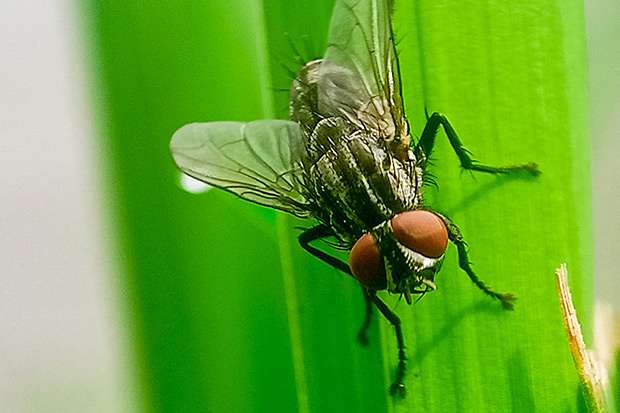Our resident science guy Joe Johnson has a fascinating update on three very different science stories: the subtle changes in Earth’s rotation, a rare meteorite impact in Georgia, and the resurgence of the screwworm fly in Central America and Mexico.
Earth’s Rotation: Less Than 2 Milliseconds Matter
Last week, Radio Catskill explored the changing rate of the Earth’s rotation and the tiny variations in day length. “And we’re totally talking like less than 2 milliseconds here. We’re not talking a big deal,” Joe clarified.
He also corrected a misstatement from the previous report: “I made a mistake. I used the term sidereal day when I was really talking about a solar day. And there’s a difference between them.”
He explained: “A sidereal day is the Earth’s rotation as determined by measuring the position of a distant star or radio source. And that’s 23 hours 56 minutes and 4 seconds. A solar day is from local noon when the sun hits the highest point in the southern sky to the next solar noon. And that’s exactly 24 hours or 86,400 seconds.”
The difference arises because “the Earth moves in its orbit about 1° per day. And so to get the sun back into that exact position, we have to then go another… 56 seconds or something like that. And so it’s the change in position of the Earth that causes the two measurements to be slightly different from each other.”
Joe illustrated the concept with a hands-on experiment: “I told Tim he should do the spinny chair experiment where you spin around on a chair with your legs and arms out and then draw them in and you go a lot faster. It kind of illustrates how a change in mass can change rotation.”
Rare Meteorite Strikes a Georgia Home
In North Georgia near Atlanta, a rare daytime fireball from June 26 was seen and heard by hundreds, leaving a sonic boom captured on dashcams and security cameras. “The next day it was reported that a meteorite fragment had actually struck a house in a little town called McDunna, Georgia in a place called Henry County and it actually made a hole the size of a golf ball in a residential roof. It was estimated to be moving about a kilometer per second and that’s about a little over 2,200 miles per hour when it hit this guy’s roof.”
The meteorite passed through the ceiling, creating a 2- to 3-inch-wide crater in the living room floor. “The homeowner said it sounded like a gunshot, like a loud gunshot.”
Approximately 50 grams of the meteorite were recovered, with 23 grams donated to the University of Georgia Geology Department for study. Researchers identified it as an elchondrite, a low-metal-content stony meteorite likely originating from the asteroid belt. “It’s basically a leftover from the formation of the solar system… about 20 million years older than the Earth.”
The meteorite has been dubbed the McDonagh meteorite, though the name must still be approved by the Meteoritical Society. Joe noted, “Most meteorites are not seen by people because about 3/4 of them fall in the ocean and most of the time they burn up before they hit the surface.”
Screwworm Flies Make a Return
The final story covers a troubling agricultural threat: the new world screwworm fly, which infects livestock by laying eggs in open wounds. “The larva actually look like wood screws. That’s why they’re called the screwworm fly… it could cause sickness, weight loss and can even be fatal.”
Although previously eradicated from the U.S. through the sterile insect technique—raising millions of flies, sterilizing them with gamma radiation, and releasing sterile males to prevent reproduction—the flies have resurfaced. “In 2022 this gap was breached… in 2023, they were in Costa Rica, 2024, they were in Nicaragua and Honduras. And now they’re in Mexico. Mexico, Southern Mexico has had 2,700 cases and… 25 human cases too.”
The U.S. government, in cooperation with Latin American countries, is responding by expanding sterile fly releases, developing new traps, and improving cattle inspection protocols. “New fly rearing factories are being built… Uruguay is even looking into gene editing to see if they can introduce a gene that would make them infertile.”
With a $15 billion cattle industry in Texas alone, officials are taking the threat seriously. “Don’t mess with that,” Joe remarked.
Image: Cochliomyia hominivorax, the New World screwworm fly (NWS), is a species of parasitic fly whose tissue-eating larvae can infest any living mammal. (Credit: American Veterinary Medical Association)

